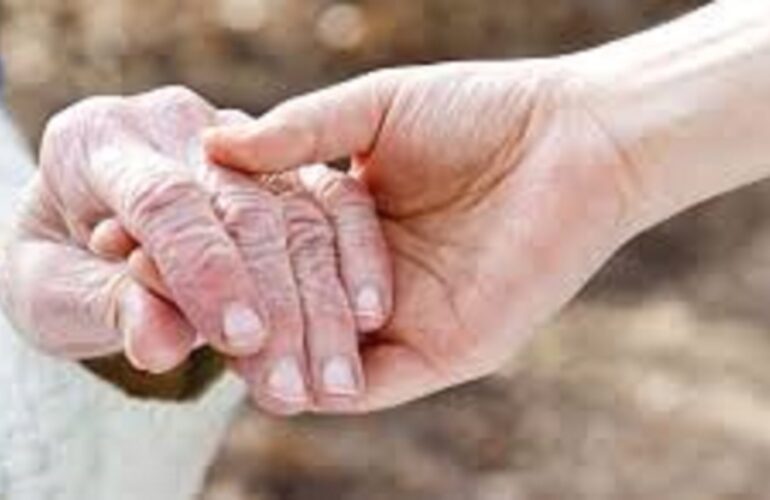Best Treatment of myopathy
Myopathy: causes, symptoms, diagnosis and treatment
Myopathies: Types, Causes, Diagnosis and Treatment Bangalore Nursing Home
Instead, treatment involves symptom management such as physical therapy. Some hereditary myopathies, such as Duchenne muscular dystrophy
No, there is no cure for myopathy. However, treatment can improve symptoms. If associated with myopathic disease,
To treat autoimmune myopathy, doctors may prescribe immunosuppressive drugs such as glucocorticoids, mycophenolate, rituximab, etc.
We usually treat inflammatory myopathy with oral immunosuppressive drugs and sometimes with chemotherapeutic agents. We recommend genetic testing and…
Myopathy is a general term that refers to any disease affecting the muscles that control voluntary movement in the body. Patients with muscle weakness…
This type of treatment is best characterized among various immunotherapies effective in dermatomyositis (DMY), polymyositis (PM), and immune-mediated necrotizing …
Prognosis varies depending on etiology. Morbidity and mortality of myopathies depend on the etiology of the condition, the severity of the disease, and the …
Hereditary myopathies are genetic disorders that primarily affect skeletal muscle tissue. These are caused by mutations in various genes-encoding proteins.
If your doctor has suggested that you may have myopathy, you may have a lot of questions. There are several types of myopathies with different causes and perspectives.
Myopathy is a class of diseases that attack your skeletal muscles. These diseases target muscle fibers and weaken your muscles. Myopathies can be inherited or acquired, and they often cause difficulty in performing daily tasks.
Skeletal muscles are the muscles in your body that are attached to your skeletal system. Most of the muscles in your body are skeletal muscles. These muscles are voluntary, meaning you can control what they do. But since most of your muscles are skeletal muscles, myopathy can cause many problems throughout your body.
Hereditary myopathies are myopathies that you are born with when you inherit a genetic mutation from one of your parents. Hereditary myopathies include:
Congenital myopathy. People with congenital myopathy usually start showing symptoms when they are infants or children. These myopathies often involve developmental delays in learning motor skills such as crawling or walking. Congenital myopathy commonly affects all skeletal muscles, and is often non-progressive.
Mitochondrial myopathy. Mitochondrial myopathies are caused by mutations in the mitochondria, which are the “powerhouses” or energy-producing parts of the body’s cells. In addition to muscle weakness, they can cause heart, brain or gastrointestinal problems. Examples of mitochondrial myopathies include:
Mitochondrial encephalopathy, lactic acidosis and stroke-like episodes (MELAS) syndrome
A CT scan combines several X-ray images taken from multiple angles to give a complete picture of what is happening to the blood vessels and soft tissues.
Lumbar puncture. Also called a spinal tap, a lumbar puncture removes cerebrospinal fluid for testing. Your doctor will do this by inserting a needle between two vertebrae in your lower back.
Magnetic resonance imaging (MRI). MRIs use a magnetic field and computer-generated radio waves to create an image of your organs, tissues, and skeletal system.
Nerve and muscle biopsy. When a doctor takes a biopsy, they remove a sample of tissue or a specific area for examination and testing.
Nerve conduction studies. In a nerve conduction study, a medical professional places electrodes on your skin. Those electrodes then stimulate your nerves and record electrical activity. These tests can help your doctor rule out neurological disorders.
Electromyography. Electromyography measures the electrical activity of your muscles. Your doctor will insert electrodes into specific muscles and monitor the activity while performing certain tasks, such as contracting or moving the muscle.
Treatment of myopathy
The type of treatment your doctor recommends for your myopathy depends on the type of myopathy you have.
There is no cure for most hereditary myopathies. Instead, treatment involves symptom management such as physical therapy. Some genetic myopathies, such as Duchenne muscular dystrophy and disease, a type of metabolic myopathy, can be treated with medication.
Treating acquired myopathy means treating the cause of the myopathy. For example, endocrine myopathy is treated by stabilizing your hormone levels. Depending on the severity of the myopathy, you may still need physical therapy.
Fatigue easily, especially with activity
Myopathy makes it difficult to perform everyday tasks such as getting dressed, bathing, brushing your teeth or hair, climbing stairs, or getting out of bed.
Some myopathies have other specific symptoms. For example, in muscular dystrophy, muscle weakness is progressive and usually begins in the face.
Symptoms of myopathy
All myopathies are characterized by muscle weakness, usually in the upper arms, shoulders, and thighs. Other common symptoms you may have with myopathy include:
PS, and shoulders. Some types of muscular dystrophy may begin with an inability to relax certain muscles.
Diagnosis of myopathy
Because there are several conditions that affect your body’s nerves and muscles, you may be diagnosed with myopathy.
Look up details
More about this source text Source text required for additional translation information
Myoclonic epilepsy with ragged red fiber (MERRF) syndrome
Muscular dystrophy. Muscular dystrophy is characterized by progressive weakness in skeletal muscles. These types of diseases are caused by degeneration of muscle tissue due to structural support protein abnormalities.
Metabolic myopathy. Metabolic myopathies are characterized by episodic muscle weakness that is sometimes random but usually triggered by exercise or muscle exertion. These myopathies are caused by defects in genes that code for certain enzymes.
Acquired myopathies are myopathies that are acquired later in life. Examples of acquired myopathy include:
Autoimmune/inflammatory myopathy. This type of myopathy is caused by an autoimmune condition that causes problems with muscle function.
Toxic myopathy. Toxic myopathy is myopathy caused by toxic substances – for example, alcohol – and certain drugs.
Endocrine myopathy. Endocrine myopathy is a myopathy caused by problems with the endocrine system, which regulates hormone production. Endocrine myopathies can be caused by thyroid or adrenal diseases.
Infectious myopathy. Infectious myopathy is a myopathy caused by a viral, bacterial, parasitic or fungal infection.
Acute myopathy. Critical illness myopathy may develop while a person is in the intensive care unit. It is believed to be caused by prolonged immobility. This type of myopathy affects the muscles you use to breathe.
To do this, you may need to undergo extensive diagnostic tests. These tests may include:
Genetic testing. Genetic testing looks for problems in your genes using a blood or saliva sample.
Biochemical genetic testing. Biochemical genetic testing looks for abnormal enzymes from samples of blood, urine, spinal fluid, or amniotic fluid.
Computed Tomography (CT). Your bones, man




